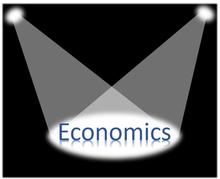
In late 2014, the Applied Economics Office (AEO) published NIST Special Publication (SP) 1176, “Costs And Cost Effectiveness of Additive Manufacturing.” For some time, this publication was the top result in google for “additive manufacturing economics.” The top site as of now (July 23, 2019), is a publication by the Economist, which prominently features an author of SP 1176. Currently, the publication is among the most downloaded NIST reports and the Engineering Laboratory’s most downloaded NIST publication. This work was followed up with a book chapter and journal article.
SP 1176 examines literature on the costs of additive manufacturing and seeks to identify those instances where additive manufacturing might be cost effective. It also identifies potential means for reducing costs when using this technology. Current research on additive manufacturing costs reveals that this technology is cost effective for manufacturing small batches with continued centralized manufacturing; however, with increased automation distributed production may become more cost effective. Due to the complexities of measuring additive manufacturing costs, current studies are limited in their scope. Many of the current studies examine the production of single parts. Those that examine assemblies tend not to examine supply chain effects such as inventory and transportation costs along with decreased risk to supply disruption. Currently, research also reveals that material costs constitute a major proportion of the cost of a product produced using additive manufacturing. However, technologies can often be complementary, where two technologies are adopted alongside each other and the benefits are greater than if they were adopted individually. Increasing adoption of additive manufacturing may lead to a reduction in raw material cost through economies of scale. The reduced cost in raw material might then propagate further adoption of additive manufacturing. There may also be economies of scale in raw material costs if particular materials become more common rather than a plethora of different materials. The additive manufacturing system is also a significant cost factor; however, this cost has continually decreased. Between 2001 and 2011 the average price decreased 51 % after adjusting for inflation.
The use of additive manufacturing has increased significantly in previous years. Additive manufacturing is used by multiple industry subsectors, including motor vehicles, aerospace, machinery, electronics, and medical products. Currently, however, additive manufactured products represent less than one percent of all manufactured products in the US As the costs of additive manufacturing systems decrease, this technology may change the way that consumers interact with producers. Additive manufacturing technology opens up new opportunities for the economy and society. It can facilitate the customized production of strong light-weight products and it allows designs that were not possible with previous manufacturing techniques. Various challenges, however, can impede and slow the adoption of this technology. In many instances, the cost of producing a product using additive manufacturing processes exceeds that of traditional methods.

